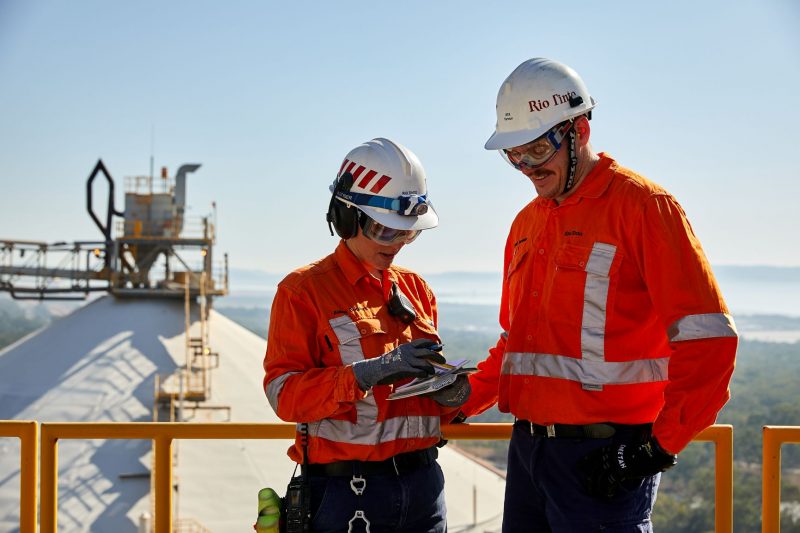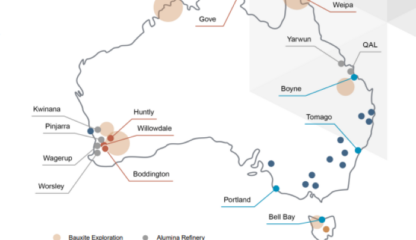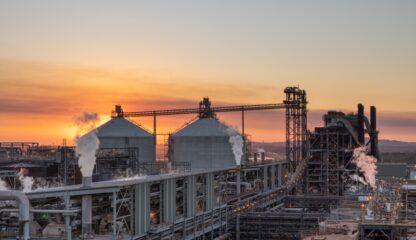
Could Hydrogen Help Reduce Emissions in the Aluminium Industry?
New research will help us find out.
Australia is the world’s largest producer of bauxite and the largest exporter of alumina, accounting for 15 per cent of global alumina refining capacity. Alumina refining is an energy intensive process that uses high pressure steam to produce the heat required to process bauxite into alumina. Alumina can then be converted to aluminium in a smelting process.
Aluminium is found in everything from cars to phones. But one of the challenges of producing this essential material responsibly is finding ways to decarbonise the process. Part of the reason is that creating alumina creates greenhouse gas emissions.
ARENA has identified the alumina sector as a key target in its strategy to support industry to reduce emissions due to the potential size of emissions abatement. Rio Tinto has partnered with the Australian Renewable Energy Agency, and through a study at Yarwun alumina refinery in Gladstone, Queensland, Australia, Rio Tinto hopes to find a way to use renewable hydrogen in alumina refining – and other industries too.
Conventional alumina refining combusts natural gas to achieve the high temperatures necessary in the calcination process. Under the Rio Tinto Pacific Operations Hydrogen Program, Rio Tinto will investigate the technical implications of displacing natural gas with renewable hydrogen. The study would inform the viability of a potential demonstration project to validate the findings. $579k of the $1.16m total project cost will be Funded by ARENA, as part of the Advancing Renewables Program.
“If we can replace fossil fuels with clean hydrogen in the refining process for alumina, this will reduce emissions in the energy and emissions intensive refining stage of the aluminium supply chain. Exploring these new clean energy technologies and methods is a crucial step towards producing green aluminium. If successful, the technical and commercial lessons from Rio Tinto’s study could lead to the implementation of hydrogen calcination technology, not only in Australia, but also internationally,” ARENA CEO Darren Miller said.
Rio Tinto Aluminium Pacific Operations acting managing director Daniel van der Westhuizen said “We see the ARENA and Rio Tinto-funded study as a step towards reducing refinery emissions and one that has the potential to play an important part in Rio Tinto’s commitment to decarbonisation. “We’re investing in work that needs to be done, not only to decarbonise one of our sites, but also to help provide a lower-emissions pathway for Rio Tinto and the global aluminium industry.
“We recognise we are on a long road towards reducing emissions across our operations and there is clearly more work to be done. But projects such as this are an important part of helping us get there.”
Summary
The project is a technical feasibility study investigating the use of renewable hydrogen to partially decarbonise alumina refining at Rio Tinto’s Yarwun alumina refinery in Gladstone, Queensland.
Need
Rio Tinto’s alumina refining process in Australia contributes to global greenhouse gas emissions. Current calcination technology uses air and natural gas to calcine alumina hydrate, which forms part of the alumina refining process. Decarbonising alumina refining will require developing an alternative low emissions pathway to calcine alumina hydrate.
Action
The project will look to the technical feasibility of using renewable hydrogen in calcination, and includes the following activities:
- Laboratory test work to provide confirmation of the calcination flow sheet and mass balance.
- Engineering study to understand the technical and safety implications of storing and utilising renewable hydrogen at the Yarwun alumina refinery, including determining the feasibility for the renewable hydrogen supply.
- Calcination retrofit engineering concept study to determine the technical feasibility of retrofitting a calcination unit to use renewable hydrogen for a pilot program at the Yarwun alumina refinery.
Outcome
The results of the project will improve understanding as to the technical feasibility of replacing natural gas with hydrogen as part of the calcination of gibbsite in alumina refining. It will also improve understanding of whether the existing calcination technology can be retrofitted to integrate hydrogen, and whether hydrogen can be integrated safely.
Here are five reasons why hydrogen could help reduce industry emissions:
1. Hydrogen burns cleanly.
When you burn hydrogen, you get steam. Nothing else.
2. The steam and water created can be put to good use.
Steam can be captured and used in other parts of the refining process. Then, it can be condensed into water, which can be recycled to create more hydrogen. That’s something Rio Tinto is looking at as part of this study. It’s important because creating 1kg of hydrogen takes 9kgs of water. So, creating truly green hydrogen needs renewable energy AND a renewable water supply.
If steam generated from the hydrogen fired calciner is captured and used to replace fossil fuels in other parts of the refining process, we could decarbonise up to 50% of the process.
3. It has good combustion properties.
Part of the process of extracting alumina from bauxite involves burning the mineral at around 1000 degrees Celsius in huge heaters, known as calciners. And there are only a few ways you can achieve the temperature needed. Hydrogen’s properties make it well suited to these kinds of industrial processes, like alumina refining.
4. If we get the technology right, it could make hydrogen more affordable.
For hydrogen to be widely adopted, it also needs to be a cost-efficient solution. One of the ways we can make it more affordable for wider industrial use is by developing technologies that can be built into existing infrastructure, avoiding the need to build new equipment or making large-scale (expensive) modifications. Our engineering teams are looking at how we may be able to do that.
5. It can be powered by other types of renewable energy.
Solar and wind power can be used to drive the processes behind creating renewable hydrogen.
What Rio Tinto will learn from the study
- How hydrogen can be stored, transported and used safely for alumina refining
- Engineering solutions for designing and building equipment to capture steam and burn hydrogen at an industrial scale
What Rio Tinto learns will help with the next step: testing full-scale pilot technology that can be safely retrofitted to existing refineries.
The study will comprise two distinct work packages:
- Simulating the calcination process using a lab scale reactor at Rio Tinto’s Bundoora Technical Development Centre in Melbourne, Victoria.
- Preliminary engineering and design study conducted at Rio Tinto Yarwun to understand the construction and operational requirements of a potential demonstration project at the refinery.
The study will see an improved understanding of the potential for renewable hydrogen to be used in the alumina refining process and the scope of development works required to implement hydrogen fuelled calcination technology at an existing alumina refinery. Rio Tinto has lodged patents for the hydrogen calcination process.


